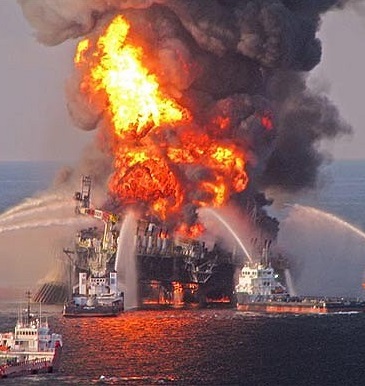Deepwater spill still seen
 Traces of the 2010 Deepwater Horizon oil spill were still detectable in 2020.
Traces of the 2010 Deepwater Horizon oil spill were still detectable in 2020.
Although the oil spilled during the Deepwater Horizon disaster in 2010 was largely transformed by the end of that summer, small amounts of highly weathered oil residues from the spill were still present in the surroundings ten years later, according to US scientists.
In a recent study, researchers followed the varied fates of the leaked petroleum components, providing important insights for future spills and clean-up efforts.
Crude oil is a highly complex mixture, so the researchers focused on the components that were present at the highest concentrations in spilled oil and those that are the most toxic (as listed on the US Environmental Protection Agency’s priority list).
By collecting and analysing environmental samples from the water, seafloor, and surrounding shorelines in numerous response studies, they followed the persistence and chemical transformations that occurred in the following months and years up to and including 2020.
Once released into the environment, significant portions of the oil evaporated into the air (up to 40 per cent).
Water-soluble chemicals dissolved relatively quickly into the sea and were biodegraded by marine organisms, but this was not true for all of the spilled oil’s components.
Oily layers coated shoreline grasses and some particles even sank to the seafloor, with low quantities still present in 2020.
However, large portions of the spill also underwent sun-dependent chemical transformations or were degraded by microbes.
“The important point about oil spills is that the oil’s compounds are a type of material that can be degraded by sunlight and marine bacteria (biodegradation), in contrast to other types of pollutants such as the chlorinated pesticides like DDT,” says first author Prof Edward Overton of Louisiana State University.
“Oil spills release lots of chemicals quickly and most damage from oil spills occurs fairly soon after the spill.”
The research also suggests that other environmental impacts are caused by the chemically altered oil components. These new chemicals can have different toxicities, as well as physical properties that influence the levels of exposure in wildlife to these residues.
“Environmental circumstances surrounding specific spills greatly affect how quickly the compounds can react, what they cover or coat and how much oxygen can be taken up in critical habitats,” Prof Overton says.
“Therefore, broad generalisation about oil spills requires understanding what was spilled and what are the environmental conditions of the spill. Hopefully this paper will help expand our understanding of the types of chemicals that are found in oil and their ability to cause environmental damages.”
The full report is accessible here.







 Print
Print